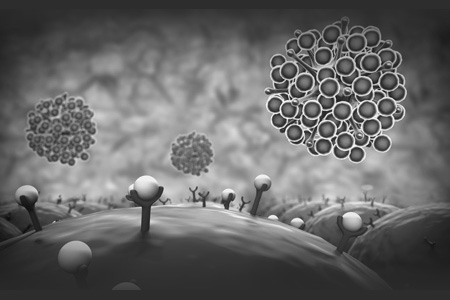 The Tumor Models Boston 2015 meeting brought together researchers from North America, Europe and Asia to discuss the application of models to cancer research. The small meeting provided excellent networking and discussion opportunities. Perhaps the most interesting aspect of the meeting was the clear evolution, over just a short time, in the approaches used to study immunotherapies.
The Tumor Models Boston 2015 meeting brought together researchers from North America, Europe and Asia to discuss the application of models to cancer research. The small meeting provided excellent networking and discussion opportunities. Perhaps the most interesting aspect of the meeting was the clear evolution, over just a short time, in the approaches used to study immunotherapies. What a difference a year makes: Tools for Immuno-oncology
In contrast to the 2014 meeting, many speakers presented results generated in human immune system engrafted mouse models. The mass movement of the field to immuno-oncology has impacted choice of models. Syngeneic and human immune system engrafted mouse models were presented as key tools for immuno-oncology studies.Clinical development moving faster than preclinical
With the approval now of three immune checkpoint inhibitor drugs based on impressive clinical results, pharma are focusing significant resources in this area. As noted by one speaker, clinical development is moving faster than preclinical development in this area. Merck's Brian Long stated that syngeneic mouse models are workhorse models. However, these models present challenges. For example, surrogate drug development may be required (at significant expense) because the human-specific drug does not recognize the target mouse ortholog and/or the human-specific drug generates mouse anti-drug antibodies (ADA).Dr. Long also discussed his group's work in evaluating preclinical efficacy of Keytruda, Merck's first-in-class anti PD-1 antibody therapy. Dr. Long showed remarkable tumor regression and immunologic endpoints consistent with both the clinical experience and mechanism of action of Keytruda. These findings, combined with similar findings presented by Neal Goodwin of Champions Oncology, where they evaluated efficacy endpoints after treatment with the anti CTLA-4 antibody Yervoy, energized the discussion and utility of human immune system engrafted models for combined immuno-oncology studies.
In addition to the advances in human immune system engrafted mice for immuno-oncology efficacy testing, Dr. Goodwin also described the increasingly close links between patient-derived xenograft (PDX) modeling in mice and translational research in humans. A co-clinical study run by Champions and Mount Sinai aims to determine if PDX models can accurately model treatment response for patients with triple-negative breast cancer.
















.jpg)

.jpg)
.jpg)
.jpg)
.jpg)





.jpg)


.jpg)
.jpg)




.jpg)




.jpg)

.jpg)



